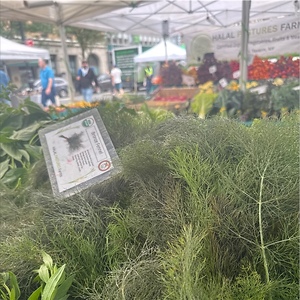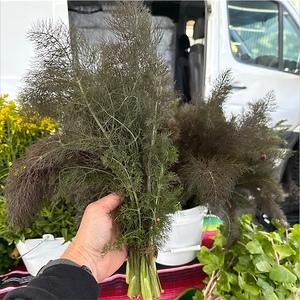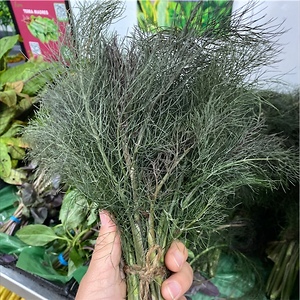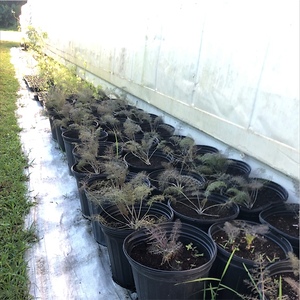

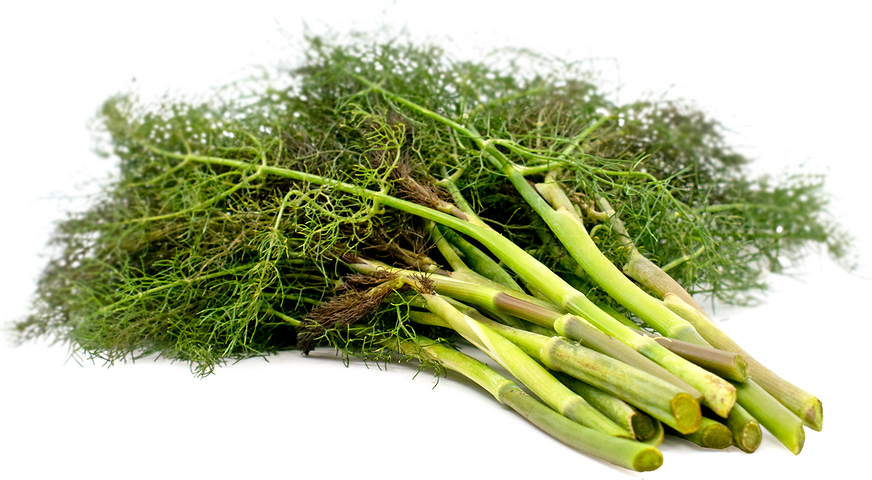
Bronze Fennel
Estimated Inventory, bunch : 0
Description/Taste
Bronze fennel is a tall herb with dramatically-colored leaves and stems. It stems, which grow to 1.8 meters in height, are green with dashes of maroon or purple. Its fine, feathery leaves are a mix of blue-green and bronze hues. When it blooms, Bronze fennel flowers are tiny but prolific, and grow on umbels. The flowers are yellow in color, and give way to gray-brown seeds that are smaller than other fennels, at around 0.15 centimeters in length. The stems, leaves and seeds are aromatic and have the typical sweet, fennel-like taste that has notes of licorice and anise.
Seasons/Availability
Bronze fennel is available in the late spring to summer months, with seeds developing in the fall months.
Current Facts
Bronze fennel is a cultivated variety of fennel that is botanically classified as Foeniculum vulgare dulce var. Purpureum or Rubrum. It is also referred to as Smoky fennel, Purple fennel, and Red fennel. Bronze fennel is one of three fennel varieties, which include Sweet fennel and Florence fennel. Beyond the differences in color of the plant, there is little difference in the uses of fennel varieties. All parts of plant, from the stem to the leaves, seeds and root, are edible. However, Bronze fennel is largely valued for its seeds, which have a milder, more delicate taste than the other fennels. Bronze fennel is often grown as an ornamental in home gardens, owing to its attractive appearance.
Nutritional Value
Like other fennels, Bronze fennel contains vitamin C, dietary fiber, potassium, folate, phosphorus, magnesium, iron and niacin. It contains phytoestrogens, which help with female-related problems. It has antioxidant, anti-inflammatory and anti-spasmodic properties.
Applications
Bronze fennel seeds may be used in baked goods like breads and biscuits. They may be used in Italian sausages, and pair well with other vegetables like carrots, beets and jicama. The seeds may also be used to make fennel tea. Bronze fennel stems may be steamed or grilled, and pair well with fish, pork and poultry dishes. Bronze fennel leaves make an attractive garnish for salad, pasta and rice dishes. Store fresh Bronze fennel in the refrigerator, where it will last for up to 5 days. To dry Bronze fennel seeds, cut the entire head of the flower off the plant when its seeds are still immature and green. Ripen the head in a paper bag. The seeds will turn gray-brown, and can be shaken off the flowers. Store the seeds in an airtight jar in cool conditions, where they will last for several months.
Ethnic/Cultural Info
All fennels have medicinal uses. The Romans used fennel as a digestive aid, while in traditional Chinese medicine, fennel was used to treat snake bites. In the United States, fennel plants are valued as host plants for butterflies, particularly the anise swallowtail and eastern black swallowtail.
Geography/History
Bronze fennel is commonly found in the United States and the United Kingdom. It is unclear as to when it was first documented, but all fennels date back many centuries, and were used in the time of ancient Egypt. Fennel is native to the Mediterranean, and likely spread around Europe and the Middle East with Roman legions. Fennel was brought to the United States by Spanish explorers in the 1600s, and has become a naturalized plant. Bronze fennel thrives in dry, sunny conditions.
Recipe Ideas
Recipes that include Bronze Fennel. One
| Smoke Fine Food |
|
Cedar-wood Salmon with Fennel and Bronze Fennel |
| Lavender and Lovage |
|
Serrano wrapped Asparagus with Baby Gem Lettuce, Bronze Fennel, Aioli, Chives and Goat's Cheese |



